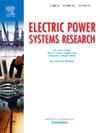基于终端二元性的三相多肢多绕组变压器模型的改进
IF 4.2
3区 工程技术
Q2 ENGINEERING, ELECTRICAL & ELECTRONIC
引用次数: 0
摘要
介绍了一种基于终端对偶法(TDM)的三相多肢多绕组变压器的增强电磁暂态模型。该模型通过引入零序路径电感,特别是首次建立的三肢变压器的零序电感,提高了精度。建立了一个封闭公式来精确计算零序路径电感,确保变压器的开路零序阻抗与用户提供的值一致。另外,通过在每个绕组上分配轭架电感来考虑绕组堆下面轭架部分的电感。此外,通过引入一个参考节点来表示槽电压,实现了非线性感应切集的稳定技术。在RSCAD-RTDS中实现了该模型,并通过大量的仿真和对比研究验证了该模型的有效性和准确性。本文章由计算机程序翻译,如有差异,请以英文原文为准。
Enhancements to Terminal Duality-based models for three-phase multi-limb multi-winding transformers
This paper introduces an enhanced electromagnetic transient (EMT) model for three-phase multi-limb multi-winding transformers based on the Terminal Duality Method (TDM). The proposed model improves accuracy by incorporating zero-sequence path inductances, specifically for three-limb transformers, which are formulated for the first time. A closed-form formula is developed to precisely calculate the zero-sequence path inductance, ensuring that the transformer’s open-circuit zero-sequence impedance aligns with the user-provided value. Additionally, the inductances of the yoke sections beneath the winding stacks are considered by distributing the yoke inductances across each winding. Furthermore, a stabilization technique is implemented for nonlinear inductive cutsets by introducing a reference node to represent the tank voltage. The proposed model is implemented in RSCAD-RTDS and validated through extensive simulations and comparative studies, demonstrating its effectiveness and accuracy.
求助全文
通过发布文献求助,成功后即可免费获取论文全文。
去求助
来源期刊

Electric Power Systems Research
工程技术-工程:电子与电气
CiteScore
7.50
自引率
17.90%
发文量
963
审稿时长
3.8 months
期刊介绍:
Electric Power Systems Research is an international medium for the publication of original papers concerned with the generation, transmission, distribution and utilization of electrical energy. The journal aims at presenting important results of work in this field, whether in the form of applied research, development of new procedures or components, orginal application of existing knowledge or new designapproaches. The scope of Electric Power Systems Research is broad, encompassing all aspects of electric power systems. The following list of topics is not intended to be exhaustive, but rather to indicate topics that fall within the journal purview.
• Generation techniques ranging from advances in conventional electromechanical methods, through nuclear power generation, to renewable energy generation.
• Transmission, spanning the broad area from UHV (ac and dc) to network operation and protection, line routing and design.
• Substation work: equipment design, protection and control systems.
• Distribution techniques, equipment development, and smart grids.
• The utilization area from energy efficiency to distributed load levelling techniques.
• Systems studies including control techniques, planning, optimization methods, stability, security assessment and insulation coordination.
 求助内容:
求助内容: 应助结果提醒方式:
应助结果提醒方式:


